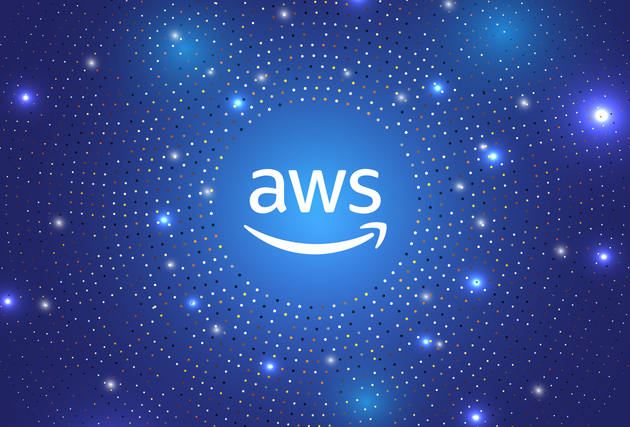8 Ways to Leverage the Cloud to Reduce Your Ecological Cost
More and more organisations, big and small, are making steps to address their environmental impact through smarter and greener technology solutions. But even with the best intentions and the support of your business, it’s difficult to know where to start.
In this article we will give some practical ideas about how to use the three Rs of cloud engineering to become a more sustainable business: Reduce, Reuse and Recycle.
If you would like to know more and get involved in the conversation, check our Contino Live webinar with AWS and EDF >
Climate Change and the Cloud: The Journey to Net Zero in the Energy Sector
The Journey to Net Zero: Why Businesses Need to Act Now
Now, more than any time in our history, we have a deep understanding of our surroundings, and as a species we have the collective ability to affect our entire planet.
As consumers — and as businesses — we need to rise to the challenge, and quickly.
Why Now?
Ambitious net zero targets
The IPCC report on climate change published in 2018 estimated that we have until 2030 to reduce global greenhouse gas emissions 45 percent (below 2010 levels) by 2030 in order to reach net zero by 2050. Achieving this is hoped to avoid warming above 1.5°C in global average temperature.
When we look at the intent to reduce atmospheric carbon dioxide (CO₂) emissions alone, the UK government recently brought forward ambitious targets towards net-zero carbon in 2050, with a reduction of 78 percent in emissions by 2035 compared with 1990 levels.
Pressure from governments
In the UK, large companies must report on their global energy use and large businesses must disclose their UK annual energy use and greenhouse gas emissions. Global governments are taking this very seriously and we can expect to see higher levels of scrutiny and deeper penalties and taxes for organisations in the future.
Incentivisation through carbon trading markets and carbon offsetting has led to an uptick in corporate responsibility, but has not yet provided adequate motivation for the depth of change needed.
Incoming regulations
Our changing climate is also acknowledged by the Bank of England and UK regulatory bodies, and recently the BoE published the Climate Biennial Exploratory Scenario (CBES) which looks at the physical risks to large organisations of climate change. 19 of the UK’s largest banks and insurers are involved in stress-testing against transition risks across a range of warming temperatures, and it is expected that the output of CBES will inform the regulatory landscape in the near future.
Pressure from customers
Customers are becoming much more ecologically minded, and are choosing organisations that align with their concerns. For example, the q4 2020 survey of customer expectations by the UK energy regulator Ofgem found that 19% of respondents stated that they chose their energy supplier on the basis that they offered green energy.
How Can We Rise To The Challenge?
At the core of our considerations should be the value that your organisation brings to your customers and to the wider world. What is it that your customers are looking for?
We shouldn’t spend time, effort and money building solutions and products for customers that aren’t going to be used or that don’t deliver value to their lives and to the life of the planet.
Delivering these valuable solutions and products has never been more efficiently realisable; our ability to leverage modern ways-of-working and the technology that enables it mean that business value, delivered at speed and scale can be achieved in a way that aligns both with your commercial and environmental strategies.
Using the power of customer insight and measurable understanding of their behaviour will ensure that you eliminate waste and improve your market position while minimising the ecological cost of delivering these solutions.
Analyse and Understand Your Ecological Impact
Honest self-appraisal of the use and uptake of customer solutions along with rapid turn-around of sizing and on/off of business activities also minimises cost; there’s no need to offer a service that is always on if it is not used at certain times of year, month, week, day or even hour.
Using modern tooling in the cloud such as pipelines, and machine learning with modern approaches such as automation, infrastructure-as-code reduce onerous processes, improve reliability, quality and ultimately reduce ecological cost.
You should align your ability to provide these services with appropriately scaled or available services, and reduce your costs and ecological impact when you’re able.
Should your business value cost the Earth?
Let The Cloud Service Providers Do The Hard Work!
Carbon cost has often been seen as a ‘soft cost’ when considered alongside expectations of revenue and profit. As governments act more deeply, we expect to see an alignment of the cost of business with the ecological cost, and a rise of incentives for businesses to act in an ecologically sound manner.
AWS, Azure and GCP all have the benefit of homogeneity and scale in their provision of computing resources. The massive operational scale of the Cloud Service Providers (CSPs) means that measurement of the physical hardware layer—including power provision, cooling, operational efficiency, physical security, research and development, hardware maintenance and logistics—all have to be measured and known.
Every CSP is taking a close look through the lens of ecological cost at the energy and servicing requirements for their cloud provision, and the publishing of such will become a necessity in the Cloud market.
We will show how the three Rs of cloud engineering can deliver practical steps to reduce your ecological impact, now and for the future.
The State of the Public Cloud in the Enterprise: Contino Research Report 2020
Why is the public cloud the greatest enabler in a generation?
We asked 250 IT decision-makers at enterprise companies about the state of the public cloud in their organisation.
The 3 Rs of Sustainable Cloud Engineering: Reduce, Reuse, Recycle
Reduce
1. Reduce Your Run Costs: Right-sizing and Just-In-Time Computing
Using more computing resources than are needed is commonplace in companies that run their own data centres. It is simply not possible for companies running on-premises to efficiently scale in and out to match demand.
Cloud computing done right has the potential to provide this, meaning a closer alignment between business value, economical cost and, inevitably, ecological cost.
2. Reduce Waste in Technology: Measure Twice, Cut Thrice
Cloud Service Providers recognise that businesses need as many data points as they can in order to get the best business intelligence and to make the most appropriate decisions. Therefore the ability to accrue and understand the metrics of your digital business is readily available, enabling deep insights into your cost-per-service, cost-per-product and cost-per-user.
This offers opportunities to realise deep efficiencies on an ongoing basis, and reduce your cost base and ecological impact.
3. Reduce Time To Market
Part of an organisation’s ecological cost is the TIME spent delivering value to customers, to improving an organisation’s value proposition. This is not only a loss for an organisation in terms of opportunity cost, but time needlessly wasted slowly building and prototyping solutions—badly measured, incorrectly assessed, endlessly discussed (all that literal hot air in meetings!). This all continues to add to the ecological cost of the products being offered; it’s not only the runtime at delivery, but also the discovery, development, testing and release cycles wasted before the offering even becomes part of an organisation's unique value proposition.
By cutting down the time it takes to provision infrastructure, the cloud can significantly reduce your time to market, freeing up more time for innovation and enabling more growth opportunities.
4. Reduce Your Data Costs: Dedupe the Data, Dedupe the Ecological Cost
Just because something can be copied perfectly, forever, we must take a moment to consider whether it should. Often when we engage in transformation work, large amounts of compute, storage and effort are expended on the upkeep of assets that provide limited or no value to the company’s strategic priorities; as the ecological and fiscal costs of the upkeep of assets rise, there will be a change in the attitude around durability and provision of valueless assets.
Some of the next generation storage tooling can help reduce unnecessary duplication, with deduplication becoming the norm and versioning being available on all the cloud platforms major storage offerings.
Reuse
5. Reuse Infrastructure
The benefits of using cloud platforms for your infrastructure is that companies are no longer responsible for the purchase and upkeep of physical hardware. The CSPs themselves look after the underlying physical layer, allowing us to reuse the virtual infrastructure we can provision (and to reduce when not needed).
The creation of these resources can all be invoked through automated processes, and we can reuse these processes time and again instead of starting from scratch each time we need to make a change.
6. Reuse Code
Using code to describe and instantiate your infrastructure allows for that code to be reused and repurposed repeatedly. This removes costly reiterations, and drastically reduces rework, which in turn drives down your ecological cost.
Recycle
7. Recycle Best Practices
Customers of CSPs gain the benefits of scale and breadth of their services. This scale and breadth yields access to known and proven architecture patterns.
Cloud is a known quantity in the technological landscape, and the Recycling of best practices, common templated architectures, governance and controls are all possible. The CSPs themselves are continually innovating to make the known best practice more easily achievable, meaning less time, effort, and ecological cost incurred in enterprise success.
8. Recycle Business Processes: Automate Processes, Less Hot Air
The only way to be able to scale with the efficiencies that customers demand is through the use of patterns like Infrastructure-as-Code, Continuous Integration and Continuous Deployment (CI/CD) and immutability. Using these approaches allow for consistent, robust products and services to be provided repeatably, and drastically reduces the need for human intervention. An opportunity to avoid so much hot air in meetings, and to more quickly deliver value to the customer.
Conclusion
It is vital that all of us help deliver a greener, more efficient future. Using the incredible opportunities of the present, with modern ways of working, the power and speed of the cloud, and our improved abilities to collaborate will help us realise that future. We hope you will join us on this journey.
If you missed it, make sure you watch our Contino Live webinar.









